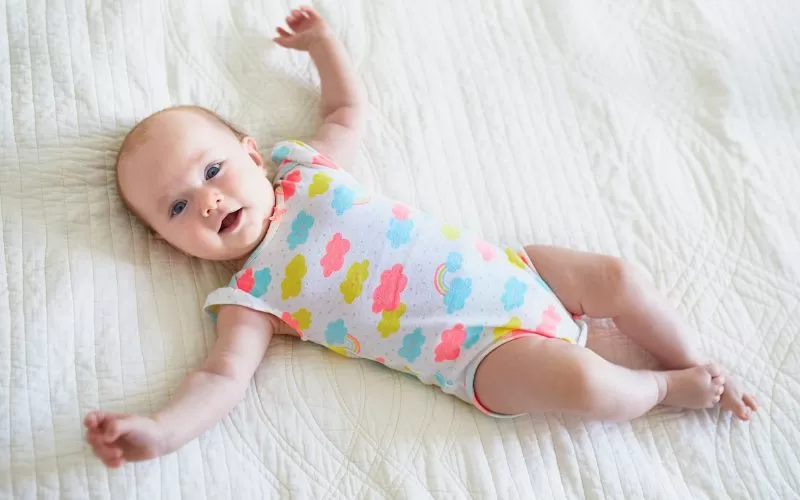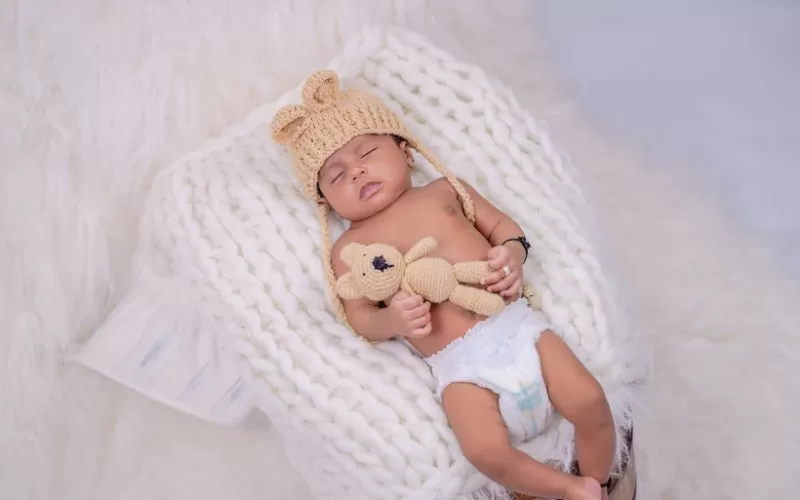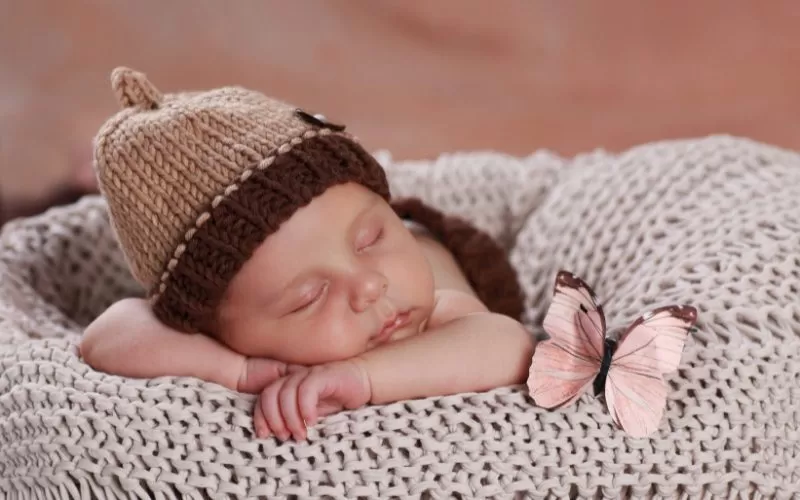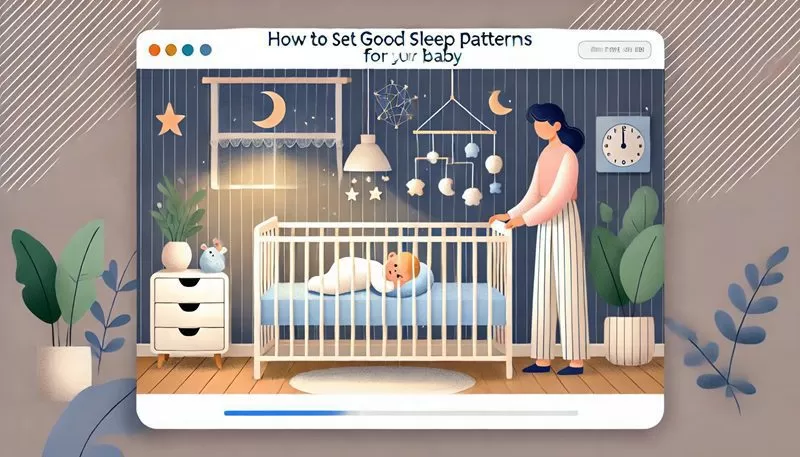Table of Contents
Set Good Baby Sleep Patterns
Setting good sleep patterns for your baby is essential to ensure their healthy development and well-being. As a parent, navigating the sleep patterns of a newborn can be challenging, especially since babies’ sleep cycles are very different from those of adults. In this guide, we will explore tips and strategies for helping your baby develop good sleep habits. We’ll also introduce some must-have products from ebabymart.com to make the process easier. By understanding baby sleep at 2-12 months: what to expect, you can create a sleep routine that works for both you and your baby.
Establishing a consistent bedtime routine is crucial to helping your baby develop healthy sleep patterns. According to healthy sleep habits for babies, consistency and routine play a significant role in promoting better sleep quality for infants and toddlers. Ensuring your baby gets the right amount of sleep is vital to their overall development and well-being.
Understanding Baby Sleep at 2-12 Months: What to Expect

During the first year of your baby’s life, their sleep patterns change dramatically. In the early months, babies sleep for short bursts throughout the day and night. However, as they grow, they start to develop more consistent sleep patterns.
At 2-3 months, most babies begin to sleep longer stretches at night, though they still wake frequently to feed. By 6 months, your baby may start sleeping through the night, but it’s not unusual for night wakings to persist. By the time your baby reaches 12 months, they should have a more established sleep routine.
What to expect at different ages:
- 2-4 months: Short naps and frequent night wakings
- 4-6 months: Longer stretches of night sleep, possibly sleeping through the night
- 6-12 months: More regular sleep patterns with fewer night wakings
Using products like our Baby Sleep Sound Machine can help create a calming environment for your baby, promoting better sleep. Sound machines can mask household noises and provide soothing white noise, helping babies stay asleep longer.
As you work to establish good sleep patterns for your baby, it’s also essential to focus on keeping them comfortable throughout the night. One key element of this is preventing diaper rashes and skin irritation, which can disrupt their rest. Ensuring frequent diaper changes and using a diaper cream with natural ingredients can help keep their delicate skin protected. For more tips on How to Prevent Diaper Rashes and Skin Irritation check out our full guide, which includes advice on the best products to use and preventative measures you can take.
Infant Sleep Cycles: How Are They Different From Adults?

It’s important to understand that infant sleep cycles are not the same as adult sleep cycles. Infant sleep cycles: how are they different from adults? For one, babies spend more time in lighter stages of sleep, which makes them more prone to waking up. Additionally, their sleep cycles are much shorter, lasting around 50-60 minutes compared to an adult’s 90-minute cycle.
Babies go through two stages of sleep: active sleep (similar to REM sleep in adults) and quiet sleep (similar to deep sleep). During active sleep, babies may twitch, make sounds, and even wake up briefly, but this is normal.
By using swaddles or sleep sacks like our Organic Cotton Baby Swaddle, you can help your baby feel more secure during these lighter sleep stages. Swaddling can reduce startle reflexes and help your baby stay asleep longer, especially during those early months when their sleep cycles are shorter.
Understanding Baby Sleep Cycles and Patterns

To set good sleep patterns for your baby, it’s crucial to understand how their sleep cycles work. Babies alternate between active and quiet sleep, and their ability to connect sleep cycles improves as they grow. Understanding baby sleep cycles and patterns can help you adjust your baby’s routine to encourage longer, more restful sleep.
At around 3-4 months, many babies begin to develop the ability to self-soothe. This means they may be able to fall back asleep without your intervention if they wake up during a light sleep cycle. Encouraging self-soothing can be an essential step in promoting good sleep habits.
To support your baby’s sleep cycle development, consider creating a consistent bedtime routine. A predictable routine signals to your baby that it’s time to wind down. Products like our Crib Mobile with Soft Lights and Music can be a soothing part of this routine, helping to calm your baby before sleep.
Common Newborn Sleep Challenges and How to Overcome Them: Establishing a good sleep pattern for your baby can be challenging, especially when dealing with common sleep issues like frequent night waking, difficulty settling, or short naps. Many parents struggle to navigate these hurdles, but understanding these sleep challenges and knowing how to address them can make a big difference. If you’re facing any of these sleep issues, check out our guide on Common Newborn Sleep Challenges and How to Overcome them for practical tips and solutions to help your baby (and you!) get the rest they need.
Creating a Sleep-Friendly Environment for Your Baby

A sleep-friendly environment is essential for setting good sleep patterns. Creating a calming, comfortable space can make it easier for your baby to relax and sleep for longer stretches. Here are a few tips for setting up the perfect sleep environment:
- Keep the room dark: Darkness signals to your baby that it’s time to sleep. Use blackout curtains or a dim light to create a cozy atmosphere.
- Control the temperature: Babies sleep best in a cool room, around 68-72°F (20-22°C). Be sure not to overdress your baby and use a light blanket or sleep sack.
- Use white noise: A sound machine like the Baby Sleep Sound Machine can help create a peaceful environment by drowning out household noises.
By making these small changes, you can create an environment that promotes healthy sleep habits and helps regulate your baby’s sleep cycles.
Establishing a Consistent Bedtime Routine

Consistency is key when setting good sleep patterns for your baby. A bedtime routine that is predictable and soothing can help signal to your baby that it’s time for sleep. Your routine might include a bath, feeding, and reading a book, followed by laying your baby down in their crib.
Keep the routine simple and repeat it every night at the same time. Over time, this routine will help your baby associate these activities with sleep, making it easier for them to wind down and fall asleep.
While establishing good sleep patterns is essential for your baby, it’s equally important to understand the potential risks associated with co-sleeping. Many parents may consider co-sleeping as a bonding opportunity, but it’s crucial to be aware of the safety concerns involved. For more insight into this topic, check out our detailed article, The Truth About the Risks of Co-Sleeping which covers the latest research, expert opinions, and guidelines for keeping your baby safe while sleeping.
Helping Your Baby Self-Soothe

Teaching your baby to self-soothe is an essential part of setting good sleep patterns. Self-soothing allows your baby to fall back asleep independently when they wake up during the night, reducing the need for you to intervene every time they stir.
Here are a few strategies to encourage self-soothing:
- Give your baby a few minutes: When your baby wakes up, wait a few minutes before intervening. Sometimes they will fall back asleep on their own.
- Use a transitional object: A soft lovey or blanket can provide comfort and security, helping your baby self-soothe. Our Soft Baby Blanket is a great option for this purpose.
Baby Sleep at 2-12 Months: What to Expect Revisited

As your baby grows, their sleep needs will change. At 2-3 months, expect frequent night wakings, but by 6-12 months, your baby should have more predictable sleep patterns. Be patient as your baby’s sleep cycles develop, and remember that every baby is different.
During this time, creating a soothing bedtime routine and a sleep-friendly environment is essential. Products like the Organic Cotton Baby Swaddle and the Crib Mobile with Soft Lights and Music can help establish these routines and support your baby’s sleep.
As you work on establishing a good sleep routine for your little one, it’s important to also consider their overall well-being, including their skin health. Baby skin is delicate and requires special attention to keep it soft, healthy, and irritation-free. For essential tips on how to care for your baby’s skin, from choosing the right products to maintaining moisture, check out our comprehensive guide on Baby Skin Care 101: Essential Tips for Soft and Healthy Skin Proper skin care is a key part of ensuring your baby stays comfortable and relaxed, which can positively impact their sleep patterns.
Conclusion: Understanding Baby Sleep Cycles and Patterns
To set good sleep patterns for your baby, you need to understand how their sleep cycles work. Infant sleep cycles: how are they different from adults? Unlike adults, babies experience shorter, lighter sleep cycles. By understanding these differences and adjusting your baby’s environment and routine, you can promote better sleep habits.
Using products like the Baby Sleep Sound Machine, Organic Cotton Baby Swaddle, and Soft Baby Blanket can make a world of difference in creating a sleep-friendly space. By establishing consistent sleep patterns early on, you’ll set your baby up for healthy sleep habits that will last a lifetime.
Establishing healthy sleep patterns for your baby is essential for their growth and development, but it can be challenging for many parents. One effective method is sleep training, which helps teach your baby how to self-soothe and sleep through the night. If you’re unsure about the best way to start, check out our detailed guide on How to Sleep Train Baby: Finding the Right Approach for You, which offers practical tips and various methods to suit your parenting style and your baby’s needs.

